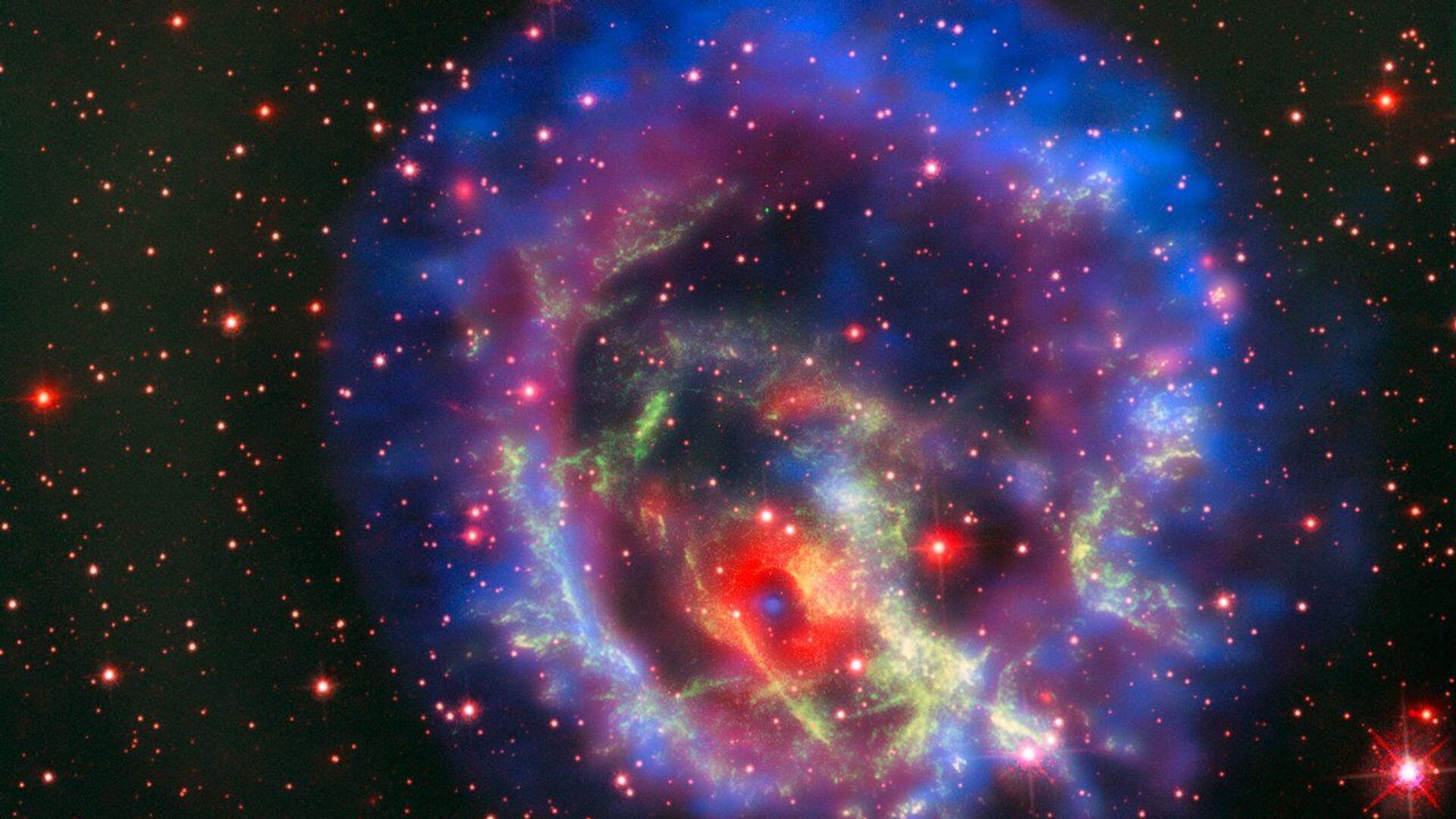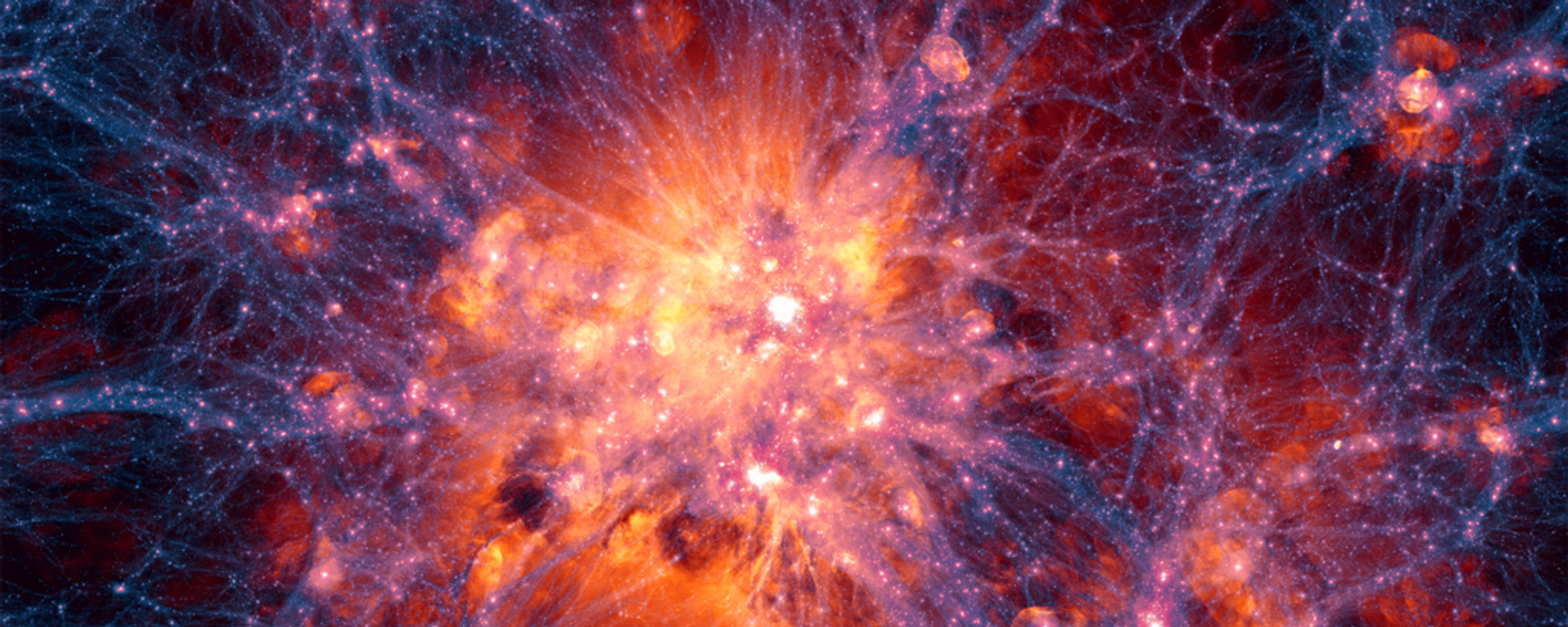https://sputnikglobe.com/20231026/astronomers-spot-mysterious-almost-dark-galaxy-three-times-larger-than-any-cluster-1114512348.html
Astronomers Spot Mysterious ‘Almost Dark’ Galaxy Three Times Larger Than Any Cluster
Astronomers Spot Mysterious ‘Almost Dark’ Galaxy Three Times Larger Than Any Cluster
Sputnik International
A strange new galaxy has been spotted some 350 million light-years away, which is the largest diffuse galaxy ever seen. They think dark matter might be to blame for its unique structure.
2023-10-26T21:24+0000
2023-10-26T21:24+0000
2023-10-26T21:24+0000
beyond politics
astronomy
dark matter
galaxy
https://cdn1.img.sputnikglobe.com/img/106399/65/1063996587_0:280:1280:1000_1920x0_80_0_0_3d6a91433dcbcd56677956377e0f40ad.jpg
Named Nube, the galaxy is roughly the size of the Small Magellanic Cloud, a dwarf galaxy near the Milky Way that is about 19,000 light-years across and about 7 billion solar masses. However, the light it emanates is much less than would be expected.According to their findings, Nube is the most massive ultra-diffuse galaxy (UDG) ever found. Such galaxies are believed to be so dim because of their age, which has left them with relatively few stars. Some are as large as the Milky Way but have just 1% of the stars. Nube has a stellar mass of 390 million solar masses, which is 5% of the stellar mass of the Small Magellanic Cloud, a comparable-sized galaxy.However, Nube is vastly larger than any other known UDG - three times as wide.In attempting to understand how and why such a bizarre galaxy formed, astronomers suggest dark matter may be to blame.Dark matter is a stand-in term used by astrophysicists to describe a type of matter that has not yet been directly observed, but the effects of which can clearly be seen on the surrounding matter. It has been theorized to exist because of otherwise-unexplainable behavior by stars and galaxies, which is inconsistent with the mass of observable matter known to be interacting with them.
https://sputnikglobe.com/20230718/three-potential-dark-stars-powered-by-dark-matter-spotted-using-webb-telescope-1111975934.html
Sputnik International
feedback@sputniknews.com
+74956456601
MIA „Rossiya Segodnya“
2023
News
en_EN
Sputnik International
feedback@sputniknews.com
+74956456601
MIA „Rossiya Segodnya“
Sputnik International
feedback@sputniknews.com
+74956456601
MIA „Rossiya Segodnya“
nube; small magellanic cloud; galaxy; dark matter; astronomy
nube; small magellanic cloud; galaxy; dark matter; astronomy
Astronomers Spot Mysterious ‘Almost Dark’ Galaxy Three Times Larger Than Any Cluster
A strange new galaxy has been spotted some 350 million light-years away, which is the largest diffuse galaxy ever seen. Officials believe dark matter might be to blame for its unique structure.
Named Nube, the galaxy is roughly the size of the Small Magellanic Cloud, a dwarf galaxy near the Milky Way that is about 19,000 light-years across and about 7 billion solar masses. However, the light it emanates is much less than would be expected.
A team of astronomers led by Mireia Montes of Spain’s University of La Laguna has been investigating Nube as part of the IAC Stripe 82 Legacy Project, which is looking for just such phenomena near the celestial equator. A paper discussing the discovery was uploaded on the arXiv preprint server and accepted for publication in the journal Astrophysics of Galaxies.
According to their findings, Nube is the most massive ultra-diffuse galaxy (UDG) ever found. Such galaxies are believed to be so dim because of their age, which has left them with relatively few stars. Some are as large as the Milky Way but have just 1% of the stars. Nube has a stellar mass of 390 million solar masses, which is 5% of the stellar mass of the Small Magellanic Cloud, a comparable-sized galaxy.
However, Nube is vastly larger than any other known UDG - three times as wide.
In attempting to understand how and why such a bizarre galaxy formed, astronomers suggest dark matter may be to blame.
"To this end, and under the hypothesis that the distribution of stars in Nube is representative of the distribution of the dark matter halo, we found that a soliton-shaped profile (typical of fuzzy dark matter) reproduces the observed distribution of stars very well," the authors wrote.
Dark matter is a stand-in term used by astrophysicists to describe a type of matter that has not yet been directly observed, but the effects of which can clearly be seen on the surrounding matter. It has been theorized to exist because of otherwise-unexplainable behavior by stars and galaxies, which is inconsistent with the mass of observable matter known to be interacting with them.



